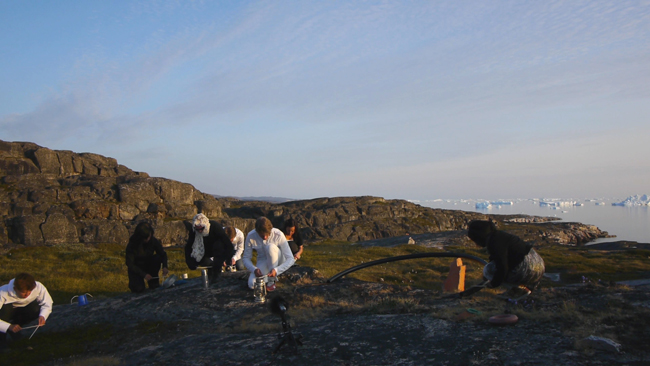Ojai & Site-Determination by Ross Karre, ICE percussionist and Director of Production

Site-specificity is a common term in art production circles. I think most artists and audiences have a basic understanding of what it means. But I find site-specificity to be a glorification of a process which is required of all good art. Nothing is created in a vacuum. Nothing is presented in a vacuum. The site/context matters. All works are site specific by default but the process of creatively optimizing a work via its context can be the difference between a good realization and a bad one. A performance can either attempt to beat its head against the boundaries of a context or it can ask a simple question, “What changes do I make to this piece to transcribe it for this place?”
It’s a question we’ve been asking from the very first brainstorming sessions for the Ojai Festival programming and production. Whether it’s the Libbey Bowl presentations of intricate sequences of Boulez, Varèse, and Xenakis or the works of John Luther Adams in the park, every program must ask the question.
The answers aren’t always obvious. And some works lend themselves to subtle (or drastic) changes to create a symbiotic relationship between piece and place. In Pauline Oliveros’ works, space and sound are codependent variables. The scores are open and flexible enough to allow extemporaneous performance decisions which are guided by the space: its reverberations, its noise floor, and its general ambiance. From one interpretation to the next, a space may have a more profound impact on a performance than the instrumentation itself! (Note the radical differences in each performance of George Lewis’ Artificial Life on digitice.org, ICE’s digital media library.)
For Anna Thorvaldsdóttir’s In the Light of Air, ICE specifically encouraged Anna to make a piece which would be redefined in each new space. In Ojai, we will install her work in the intimate Zalk Theater such that its doors which overlook the valley become a dramatic lighting design element. It will be a sublime juxtaposition of piece and place!
But it is in John Luther Adams works where I find I have the greatest curiosity about this relationship. In 2009 I had the great fortune of working with John on the premiere of his Inuksuit in the Banff National Forest. On the heels of his experiences with Rob Esler in sites in the southern California desert and the Alaskan Tundra, Steven Schick asked John to create an outdoor percussion work which has since been performed and recorded in dozens of sites around the world–from the Park Avenue Armory to Australia. While at Banff, John lead numerous discussions about the opportunities and perils of site-specific work. He even coined (or introduced to me) a term which I have since used to represent this type of context-based interpretation: site-determined work. I like that term because it implies that the nature of the work itself will be determined by site at hand and successive performance sites. In the case of Inuksuit and Sila, the site fundamentally determines two of the most important parameters in the piece: the distribution of the performers and the resulting balances of visual and auditory stimulus.
But non-traditional site determination comes with doubts and pitfalls. To those in the sonic vicinity of the performance who are unaware of the event’s existence, how do they distinguish between John’s carefully crafted sonic phenomena and noise pollution? For the hiker enjoying the Banff National Park, how are they to know that the hand crank sirens aren’t a signal for the end of days? I guess the answer to both of these questions is, “they don’t.” And that’s a problem. But a bigger problem is humanity’s inability to garner an awareness, respect, and appreciation for their natural surroundings. For those experiencing these monumental works on the periphery of Ojai’s parks or the trails in Banff, the magic occurs as the works fade to reveal (and draw stark attention to) the greatest site-specific work ever created: nature and our ecosystem. It is in this reveal that John creates the greatest advocacy for the environment he loves so deeply. My own appreciation of nature has never been more intensely brought to the fore than in the moment when glockenspiel bird calls cross-faded with native Banff birds. I look forward to finding out what Sila will reveal about the central coast of California and the magic of the site of Ojai.
– Ross Karre, ICE percussionist and Director of Production

Ross, very smart and articulate! Good seeing and hearing you last night, I look forward to Ojai…